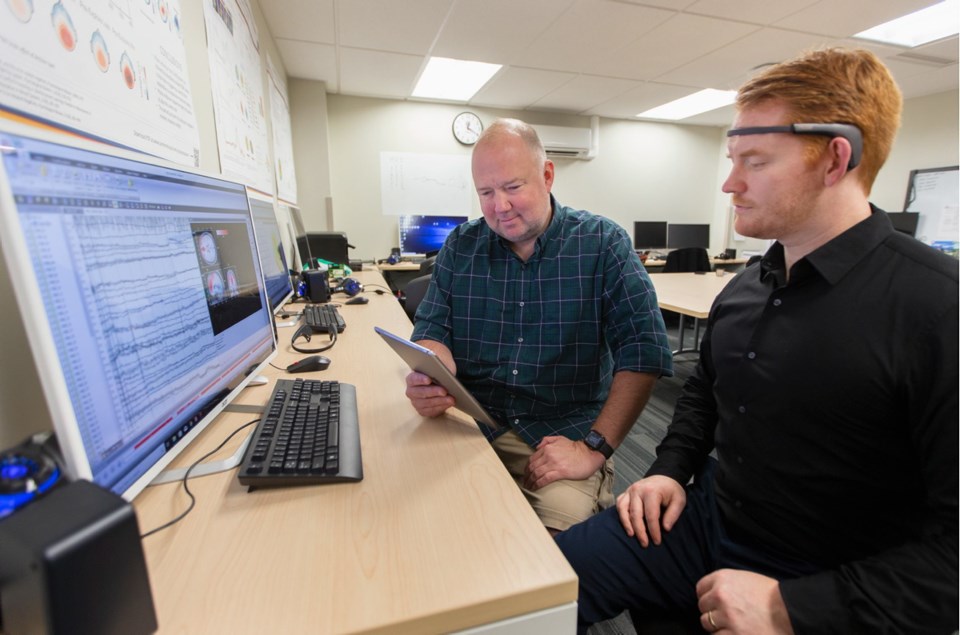Technology using brainwave-measuring headbands that could help doctors diagnose dementia in its early stages is being developed by a University of Victoria neuroscientist.
The goal is to channel people who are developing dementia to doctors for follow-up before they show obvious signs of memory loss.
тАЬI think itтАЩs going to be a game changer, because weтАЩll literally be able to say: OK, this person should be getting follow-ups and treatments, and this person тАФ youтАЩre fine, donтАЩt worry about it,тАЩ тАЭ said Olav Krigolson, a neuroscientist and associate director of UVicтАЩs Centre for Biomedical Research.
The current diagnostic test for dementia involves an assessment by a doctor in which patients are asked questions and tasked with exercises to test their memory and cognitive function.
But most patients undergo these types of tests once their memory has already started to fail and loved ones have noticed behavioural changes.
Krigolson believes the technology will detect changes in the brain in the early stages of dementia, so patients can see a doctor much earlier than they would normally.
тАЬWeтАЩre talking potentially years earlier,тАЭ he said.
The technology uses commercially available headbands that measure brainwaves. KrigolsonтАЩs lab is developing algorithms that identify different brain states according to the patterns of electrical activity.
The patterns can show the differences between a healthy brain, the brain of someone with dementia or AlzheimerтАЩs, and the brain of someone with mild cognitive impairment thatтАЩs part of the natural aging process, he said.
Scientific literature already shows that itтАЩs possible to identify different brain states, Krigolson said. тАЬItтАЩs just being able to do it in a five-minute assessment that you could potentially do at home.тАЭ
Creating this kind of affordable and readily available testing could allow anyone over the age of 65 to get assessed monthly, and catch changes early.
A key part of the project is working to differentiate between changes to cognitive function that are a natural part of aging and changes that indicate the early stages of dementia.
тАЬThe problem is mild cognitive impairment and mild dementia are very similar, but one of them is quite serious,тАЭ Krigolson said. тАЬSo being able to separate those two is kind of a big deal, because as with anything, early intervention is crucial.тАЭ
KrigolsonтАЩs team is getting ready to start testing their technology in a pilot project that will last until Oct. 31.
The technology has already been successfully tested on more than 2,500 people in projects identifying fatigue, depression and concussions.
KrigolsonтАЩs team has used the technology to measure fatigue in emergency-room nurses and doctors at Royal Jubilee Hospital and in mine workers in Northern B.C.
A concussion project was able to identify patterns in the brain that show the differences between the brains of people who have been concussed recently, a long time ago and never.
Krigolson and a small team also brought the technology to a simulated Mars habitat in Hawaii. They were trying to determine if it could be used by NASA to measure an astronautтАЩs fatigue and stress levels on long space missions to avoid potentially dangerous burnout.
тАЬAnd it worked like we said it would,тАЭ Krigolson said.
The team will put people through testing over the next several months to gather data and develop the algorithms that will identify different patterns in the brain related to dementia.
тАЬAnd in six monthsтАЩ time, weтАЩll know we can do it.тАЭ



